環境の保全
環境の保全
「生物多様性が保全された地球」の実現に向けて際立つ価値を提供し続けます。
事業活動にともなう生物多様性への影響の低減
積水化学グループの事業活動は、生物多様性がもたらす数多くの自然の恵みを受ける一方で生態系への負荷を与えています。
当社グループは、2008年4月、「環境経営方針」に生物多様性に関する項目を追加するとともに、従来よりも限りある資源やエネルギーの効率的活用を推進し、温室効果ガスや有害化学物質などによる環境負荷の低減と汚染の防止に努めます。
2011年には生物多様性ガイドライン※を策定し、事業活動における環境配慮と世界各地での環境保全活動という両面から自然環境を含む生物多様性の保全に取り組んでいます。
- 生物多様性ガイドライン
-
1.影響の分析・評価と軽減
自らの事業活動による生物多様性への影響を分析・評価し、生態系に与える負の影響の軽減に取り組みます。 -
2.技術・製品による貢献
生物多様性保全又は回復に貢献する技術と製品の開発、普及に努めるとともに、自然界の無駄のない自然循環の仕組みに学び、その知恵を活かしたものづくりを進めます。 -
3.従業員の意識向上、生息域の保全
自然保護活動等の社会貢献活動の推進を通じて、従業員の意識向上を図るとともに、生物の生息域保全に取り組みます。 -
4.ステークホルダーとの対話
地域社会、NGO、教育・研究機関などさまざまなステークホルダーと対話、協働し、生物多様性の保全の推進に努めます。 -
5.情報の発進と啓発・普及
社会から信頼され期待される企業であるために、生物多様性保全の自主的な取り組みやその成果を開示し、持続可能な社会の啓発・普及に貢献します。
生物多様性が保全された地球の実現に向けて
当社グループは、生物多様性が保全された地球の実現に貢献するために、環境長期ビジョン「SEKISUI環境サステナブル ビジョン2050」※1に基づき、取り組みを行っています。
SDGsでも謳われているように、自然環境や社会環境の課題はそれぞれにつながっており、ひとつの課題の解決を目指すために は複数の課題を認識し、働きかけを考える必要があります。
今後は、ステークホルダーとのパートナーシップを強化し、自然環境課題のみならず社会環境課題の解決を意識した活動へと進化し、自然資本だけでなく社会資本へのリターンにも貢献※2する活動を行っていきたいと考えています。
生物多様性への対応
生物多様性への対応として想定する取り組み
-
1.事業活動による生物多様性への影響評価と負荷削減
- 評価手法の開発と評価、負荷の削減
- 事業所のグリーン化(緑化やビオトーブ作りの推進)
- 生物多様性に配慮した調達の推進
-
2.技術・製品の開発・普及
- 製品開発時に生物多様性評価の盛り込み
-
3.従業員の意識向上
- 全事業所での自然保護活動の実施
- 積水化学自然塾や自然保護活動の拡大
-
4.外部ステークホルダーとの対話・協同
- 自然に学ぶものづくり研究助成、同フォーラムの定期開催
- 経団連を通じたNPOの支援
-
5.情報発信
- 展示会への出展
- 次世代への教育提供(こども自然塾、学校への出張授業)
- サステナビリティレポート、サイトレポート、Webサイトへの掲載
生物多様性アセスメント
当社グループでは、社長を委員長とするサステナビリティ委員会の下に設置された環境分科会において、年2回、事業活動に関する生物多様性およびその影響評価が審議されます。
なお、自社工場建設時等の大規模な土地開発やM&Aなどで新たな土地を取得した際には、自社の事業によって発生し得る大気・水域・土壌等への環境影響評価を実施しています。この環境影響評価の中で、生物多様性へのインパクトについても確認を行っています。
生物多様性に対するインパクト評価
当社は環境ビジョン2050において“生物多様性が保全された地球”を目指しています。そのため、生態系に関するネットポジティブの考え方を活用した取り組みを進めています。
環境ビジョンに対する進捗の度合いを確認するための統合指標としては、前述の通り“SEKISUI環境サステナブルインデックス”として自然・社会資本へのリターン率を算出しています。
この算出の内訳として、気候変動課題、社会資産に加えて、植物バイオマス(植物の一次生産)と生物多様性(生物の絶滅種数)への4側面の影響を把握し、自然資本(Nature)への影響としてモニタしています。
この植物と生物多様性の2側面に関して、おのおののリターン率の推移を示します。いずれもまだ100%以上のリターン率にはなっていませんが、気候変動や資源循環課題などの環境課題に取り組むことで着実にネイチャー・ポジティブに向けて企業活動を推進していきます。
生物多様性および植物の一次生産へのリターン率の推移
| 2016年 | 2017年 | 2018年 | 2019年 | 2020年 | 2021年 | 2022年 | |
|---|---|---|---|---|---|---|---|
| 生物多様性 側面 | 41.0 | 38.3 | 39.4 | 43.1 | 40.8 | 49.7 | 38.0 |
| 一次生産 側面 | 34.2 | 35.0 | 35.1 | 34.9 | 38.2 | 41.0 | 67.8 |
生物多様性に大きく負荷を与えるのは、原材料や化学物質の排出、販売した製品の廃棄などと認識しています。
植物の一次成長に大きく負荷を与えるのは、原材料の中でも特にバイオマス由来の紙などが該当することを認識しています。石油由来の材料がこれにつづく負荷であると認識しています。
これら負荷を軽減するためには、資源循環方針でも掲げているように、非化石資源についても持続可能性を意識した調達の強化が重要と考えています。原料の持続可能な調達を強化するため、サプライヤーマネジメントについても配慮すべき事項の見直しなどを行いガイドを作成、サプライヤーと連携しながら環境負荷および企業リスクの低減に向けて活動を始動しています。
逆に生物多様性に大きく貢献する製品には、たとえば鉱物、化石、森林資源の削減に寄与している製品などがあります。車輛・輸送時の運航時のエネルギー削減や、耐久性向上や原料の転換などにより資源循環に寄与する製品などがあげられます。前者の例としてはKYDEX社の航空機や鉄道向けの製品、後者の例としては下水道管路更生用のSPR工法関連製品などがあります。
植物の一次成長に大きく貢献する製品としては、たとえば地球温暖化を抑制する製品、廃棄物を削減可能な製品などがあります。前者の例としてはセキスイハイムのソーラーパネル搭載住宅、後者の例としては従来よりも薄肉な紙芯の利用を可能にしたクラフトテープなどがあげられます。
これらの貢献を拡大するためには、脱炭素に資する製品・技術の開発や、販売した製品の廃棄物を削減し、循環を推進するようなサービス・技術の確立が重要であると考え、サステナビリティ貢献製品の拡大によってこれを実現できるよう、取り組んでいます。
2022年度には、植物バイオマスへのリターン率が向上しています。生産事業所における緑地の質向上や、まちづくり事業における生物多様性への配慮などによって土地の使用に関してネガテイブなインパクトが減り、ポジテイブなインパクトが増加したと考えられます。
生物多様性については、IT機器の技術の進化を支える製品によって、汚染や資源へのネガテイブなインパクトが減っていますが、この効果が減少したため、リターン率低下に影響がでていると考えられます。
これからもネイチャーポジティブな企業活動を行うべく、これらのリターン率から方向性を検討しながらものづくりを推進していきます。
「自然に学ぶ」助成の継続とフォーラムの開催
環境課題を含む社会課題解決のために有効なものづくりの考え方として、2002年より、“自然の叡智に学ぶ”ことが必要であると考え、バイオミミクリ技術の発展のため、“自然に学ぶ”ものづくりの助成を行い、研究者の成果を共有する場であるフォーラムの開催を行ってきました。2022年はこの20年目に当たります。
基礎サイエンスは研究や支援に時間がかかりますが、“自然の叡智に学ぶ”ことで従来のエネルギー消費型の技術とは異なる根源的なイノベーションを生み出す可能性があると考えています。
社外の研究者に対しては、この助成を行うことで、294件(2023年3月末時点累計)の技術育成を後押ししてきました。また、このような考え方を重要視した開発を進める中、次のような技術や製品事例も出てきています。(下図参照)
- 08-79
[次世代通信社会へ貢献]

モルフォ蝶の翔の輝きに学んだ“透明フレキシブル反射板フィルム”
- 08-81
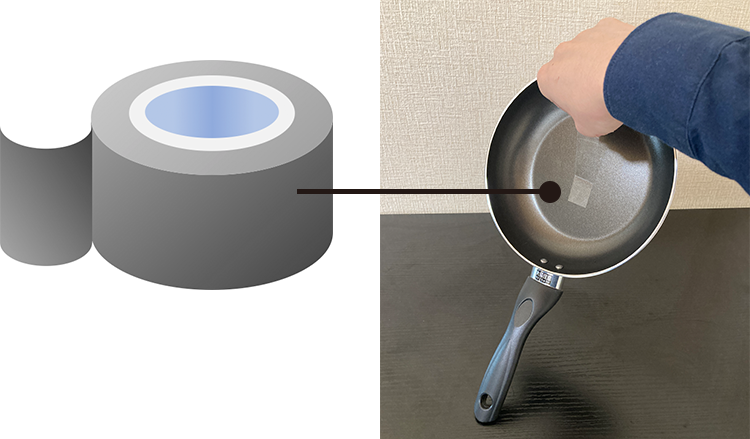
ムール貝の分泌物に学んだ“フッ素樹脂対応接着テープ”
- 08-83

植物樹脂に学んだ“ウィルテイカー/アレルバスター”
- 08-85
[気候変動の適応(ヒートアイランド現象対策)に貢献]
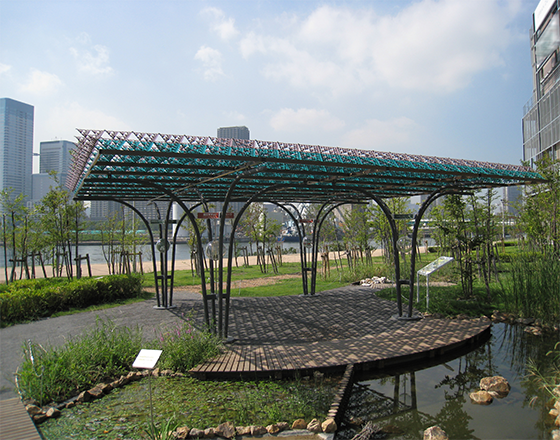
木陰の涼しさに学んだフラクタル日除け“エアリーシェード”
今後もこの“自然の叡智に学ぶ”姿勢を大切にしてものづくりを行うことで、ネイチャーポジティブな製品、事業の展開を目指していきたいと考えています。
持続可能な木材の利用とトレーサビリティの確保
当社グループでは、森林破壊の根絶と木材資源の持続可能な利用に貢献するために、製品に使用する木材は、FSC認証材など合法的に伐採された木材を使用しています。また、木材原料の伐採地域、樹種、数量など商流調査し、トレーサビリティを確保しています。再生材についても市場で使用済の木材・木質材料、または未利用の間伐材や末木枝条などを使用しています。
従来、トレーサビリティの調査は国内の生産事業所での製造に使われている木材・木質材料に限っていましたが、2020年度からは海外の事業所を含むグローバル全体での調査を行っています。2021年度からは新たに生態系への影響も考慮し、専門家の意見も取り入れた『木材調達ガイドライン』の策定に着手しました。
国内全生産事業所・研究所で緑地の質向上の取り組みを実施
国内45カ所の事業所内(総敷地面積3,209千m2、総緑地面積838千m2)において、地域の動植物の生息環境を整え、地域と事業所を結ぶ生態系ネットワークを形成し、地域連携を活性化する目的で、事業所内の緑地の質を向上させる取り組みを推進しています。土地利用通信簿®を活用し、環境中期計画(2020-2022)の期間中での評価点を2019年度比3ポイント向上させることを目標にしています。
各事業所において、環境コンサルティング会社の株式会社地域環境計画の指導を受けるなどして、周辺の自然環境と調和した緑地設計や管理計画の策定や実行、自然の循環を活かした持続的な維持管理、外来種の駆除、希少種の保全、ステークホルダーとのコミュニケーションなど様々な活動を行っています。その結果、2021年度の平均得点は2019年度比で3.3ポイント向上しました。
ミナミメダカの暮らす湿地の整備活動
滋賀水口工場では2019年度に工場敷地内全域で生物調査を実施し、その結果を踏まえて様々な生物多様性保全活動を展開しています。
主な活動としては、敷地内で特に保全価値の高い場所を「湿地ビオトープ」に指定し、希少種であるミナミメダカの保全、特定外来種であるオオフサモの駆除、定期的なモニタリングを実施しています。中でもオオフサモは切れた茎の破片からでも再生する非常に繁殖力の高い植物で、繁茂すると水面を覆いつくし水生生物の生存を脅かすことから、継続した駆除が必要です。2021年度も駆除作業を行い、ミナミメダカが元気に泳ぐビオトープ環境を維持しています。
また2020年度より、甲賀市の花に選定されているササユリの保全活動を開始しました。開花までに7~8年程かかるといわれている花で、工場敷地内で自生させることを目標として取り組んでいます。
これらの活動が認められ、しが生物多様性取組認証制度において、最上位である3つ星認証を取得しました。今後は従業員に向けた環境教育をより充実させて、環境に貢献する人材の育成に取り組むともに、周辺地域にも貢献する活動を展開していきます。
- 08-69
- 08-70
- 08-71
-
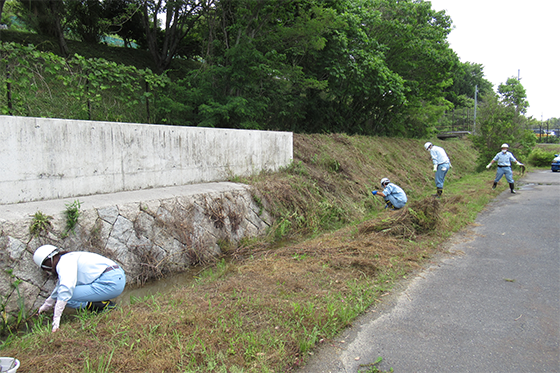
湿地ビオトープ保全の様子
-
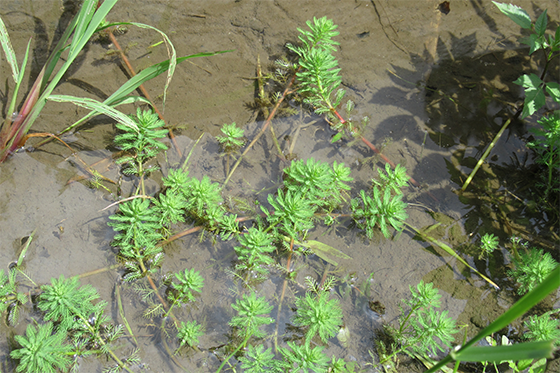
特定外来種オオフサモ
-
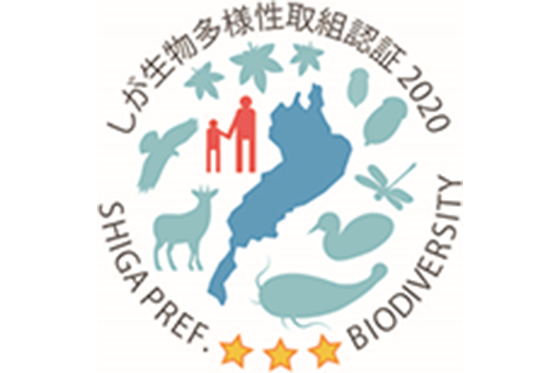
住宅事業における生物多様性の推進
セキスイハイムグループは分譲住宅事業において、まちの資産価値を維持・向上させることで、サステナブル・タウンのスキーム創成に取り組んでいます。
2020 年度は、「SEKISUI Safe&Sound Project」※1の複合大規模タウン「あさかリードタウン」において、単独の企業グループでは初めてABINC ADVANCE 認証施設※2として認定されました。なお、東京セキスイハイム(株)の「スマートハイムシティ朝霞」におけるまちづくりでは、ABINC 認証(2018 年度)を取得しています。「あさかリードタウン」では、サステナブルなまちづくりのための取り組みとして、生物多様性の観点から、まち全体に地域の在来種を中心とする豊富な植栽を施し、高い緑被率を実現しています。さらに災害に強いインフラ設備の採用や緑地の保水能力の活用により、豪雨被害の抑制を図っています。また、緑地を介した地域コミュニティの活性化のためにさまざまなイベントの実施をしており、例えば、多世代が参加できる生き物や植物等の観察会や、河原の清掃活動などがあります。今後も生き物を呼ぶ木や植物を増やすことを目的とした住民による植樹、地域固有の在来種の鳥類を呼ぶ巣箱の制作・設置等の各種イベントを、グループ会社が率先して実施する予定です。
- 「Safe」「Sound」「Safe&Sound」の3つのコンセプトのもと、安心・安全で、環境にやさしく、サステナブルなまちづくりに取り組み、当社グループの総合力を発揮して、子どもから高齢者まで、住民が安全かつ快適に生活できるハード・ソフトを提供し、価値が続くサステナブルタウンの構築を図っています。
<3つのコンセプトについて>
Safe:安心・安全。「これまでにない安心を、いつでもどこでも感じられる」
Sound:環境・快適。「住民同士が参加し、愉しみ、コミュニティを育む活気あるまち」
Safe&Sound:サステナブル。「ずっと見守り、支えつづける」Safe&Sound=無事息災に
- 11-110
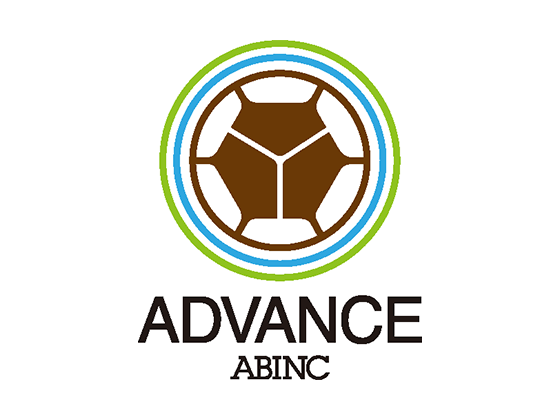
-
※2ABINC ADVANCE認証とは、一般社団法人いきもの共生事業推進協議会(ABINC=Association for Business Innovation in harmony with Nature and Community)が生物多様性保全を通じたサステナブルな地域・まちの実現や、SDGs の達成を目指す民間セクターの貢献を評価する認証システム。JBIB(一般社団法人企業と生物多様性イニシアティブ)が開発した、いきもの共生事業所®推進ガイドラインの考え方に沿って計画・管理され、かつ土地利用通信簿で基準点以上を満たし、当審査過程において認証された事業所が当認証を受けています。
- 11-123 11-124 11-125 11-126 ※11-123を設置しました。
- 11-113
-
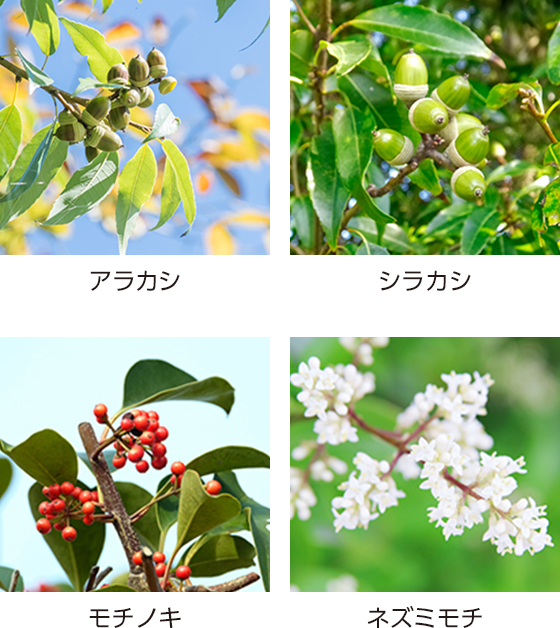
植栽予定の植物
-
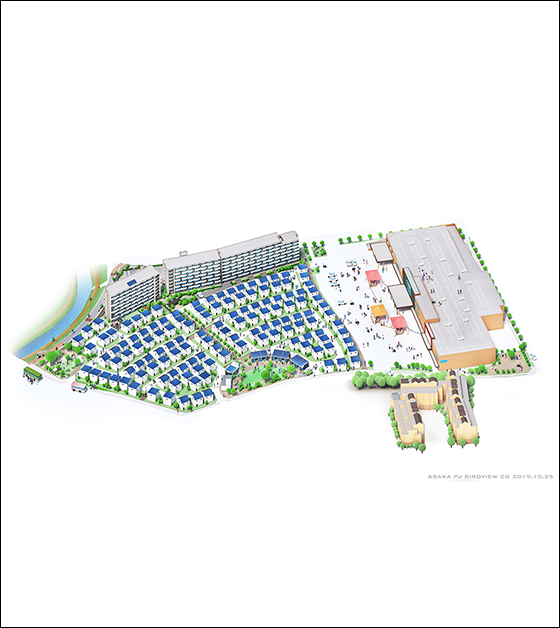
「あさかリードタウン」完成予想図
外部との協働
生物多様性の保全を目指して行動する企業団体
- 08-78
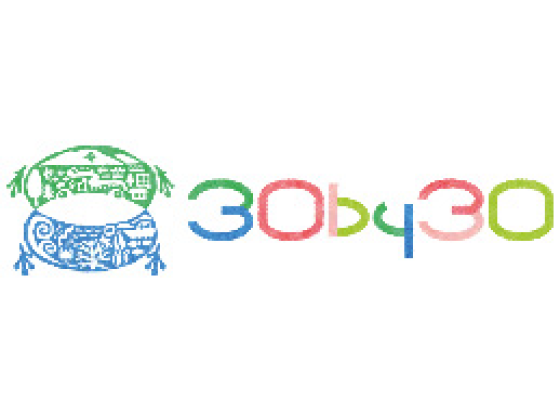
30by30アライアンス
-
主催・・・・・・・・・環境省
-
意義/目的・・・国際約束である30by30目標の国内達成
-
活動・・・・・・・・・OECM認定など2030までに生物多様性の損失を食い止め、回復させる(ネイチャー・ポジティブ)ために必要な取組みをまとめ、展開を推進
-
当社の役割・・・賛同表明し、自社および企業連携による取り組みの加速を目指しています。
-
一般社団法人企業と生物多様性イニシアチブ(JBIB: Japan Business Initiative for Biodiversity)
-
意義/目的・・・国内外の生物多様性の保全に貢献
-
活動・・・・・・・・・多様な企業と共同で生物多様性に関する研究を進めるなど、さまざまな活動を推進しています。
-
当社の役割・・・生物多様性保全を推進する企業との意見交換や、事例共有化をはかり、自社における取り組みの加速と社会での取り組みを啓発しています。
事業緑地の環境保全活動
生産事業所・研究所の生態系の調査、生物多様性の保全、外来種の駆除など環境保全活動や地域の環境づくりについて、外部の環境コンサルティング会社のサポートを受けています。
環境保全活動
環境貢献に取り組む「人づくり」として、国内外の各拠点において、自治体、学術機関、学校、NGO、NPO などと協力して、世界各国で自然環境の保全活動を展開しています。
土地利用通信簿®の結果
| 2021年度 | |
|---|---|
| 土地利用通信簿® | 3.3ポイントアップ |
| 指標 | 算定方法 |
|---|---|
| 土地利用通信簿®のポイント | 土地利用通信簿®とは企業保有地の生物多様性貢献度評価を目的にした、いきもの共生事業所®推進ツールで、事業所ごとに緑地の面積や質、管理体制などについて100点満点で評価するシート。 事業所ごとに土地利用通信簿®を用いて当該年度評価を行い、2019年度時点でのポイント数からの増加分を計算。ポイント増加分の全事業所平均値を指標とする |
